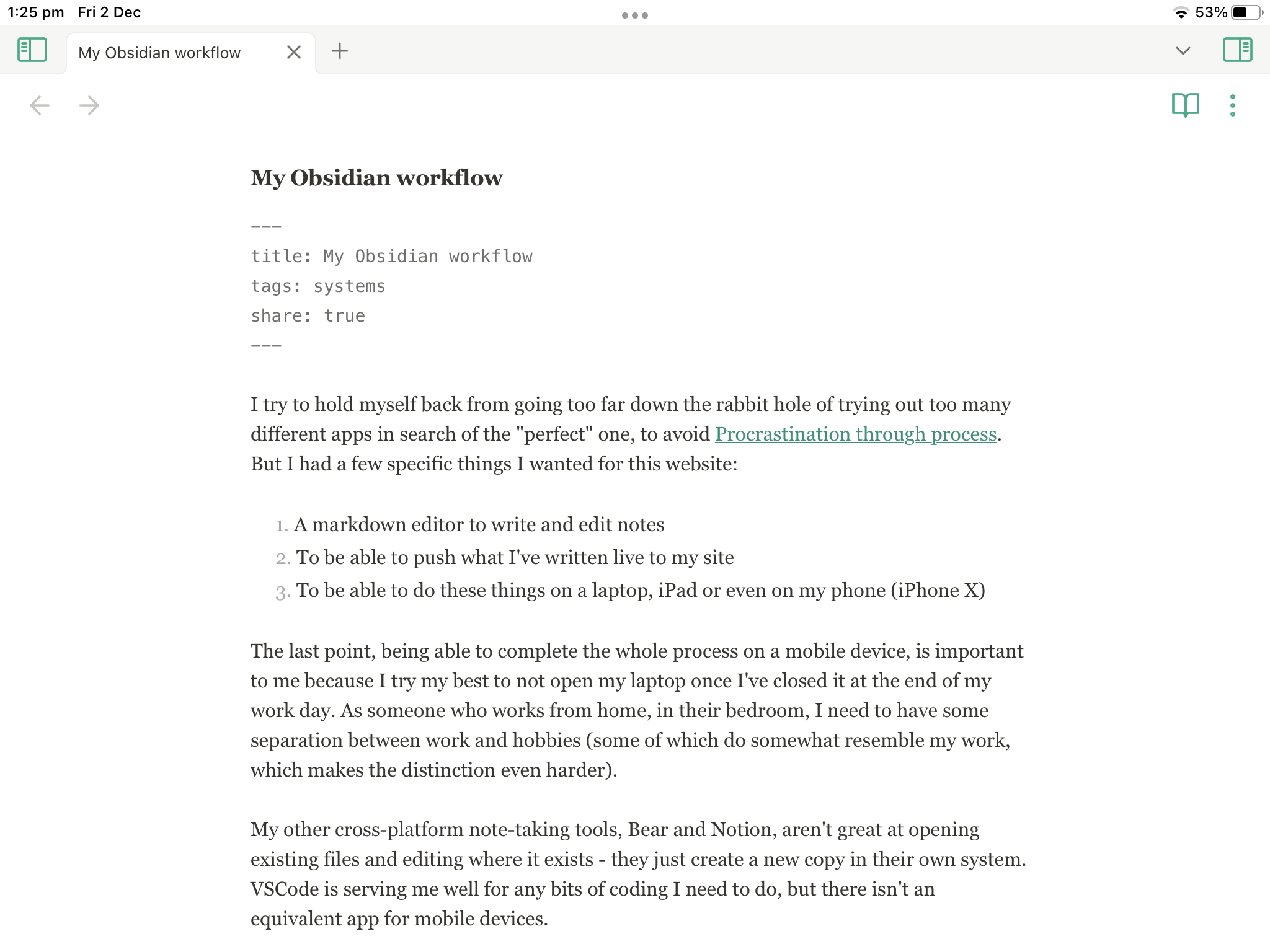My Obsidian workflow
systemsI try to hold myself back from going too far down the rabbit hole of trying out too many different apps in search of the “perfect” one, to avoid Procrastination through process. But I had a few specific things I wanted for this website:
- A markdown editor to write and edit notes
- To be able to push what I’ve written live to my site
- To be able to do these things on a laptop, iPad or even on my phone
The last point, being able to complete the whole process on a mobile device, is important to me because I try my best to not open my laptop once I’ve closed it at the end of my work day. As someone who works from home, in their bedroom, I need to have some separation between work and hobbies (some of which do somewhat resemble my work, which makes the distinction even harder).
My other cross-platform note-taking tools, Bear and Notion, aren’t great at opening existing files and editing where it exists - they just create a new copy in their own system. VSCode is serving me well for any bits of coding I need to do, but there isn’t an equivalent app for mobile devices.
The solution I’ve found is Obsidian, a note-taking app that’s really built around a knowledge management system workflow and is also very extendable through community plugins. It’s not quite as slick a writing experience as Bear, and not quite as powerful as Notion, but it does allow me to open my website files (stored in iCloud) as a “vault” of notes that I can edit and publish using a plugin.

A screenshot of this post in Obsidian. How meta!
Here’s my workflow for adding a new notes at the moment:
- Fire up Obsidian and start a new note, which I’ve set up to add to the correct folder.
- Insert a template containing the standard frontmatter using the hotkey command I set up for it. This includes a “share: false” line which I can change when I’m ready to publish.
- Write the thing, using some nice inbuilt Markdown bits and internal links.
- Change to “share: true” in the frontmatter.
- Use a hotkey command to run the Obsidian Github Publisher plugin, which will look for any new or edited notes with “share: true” and send them off to Github.
There’s a few quirks and it did take me some time to get it to this state, but in the end it’s pretty much what I was after. I imagine this will be an evolving situation…